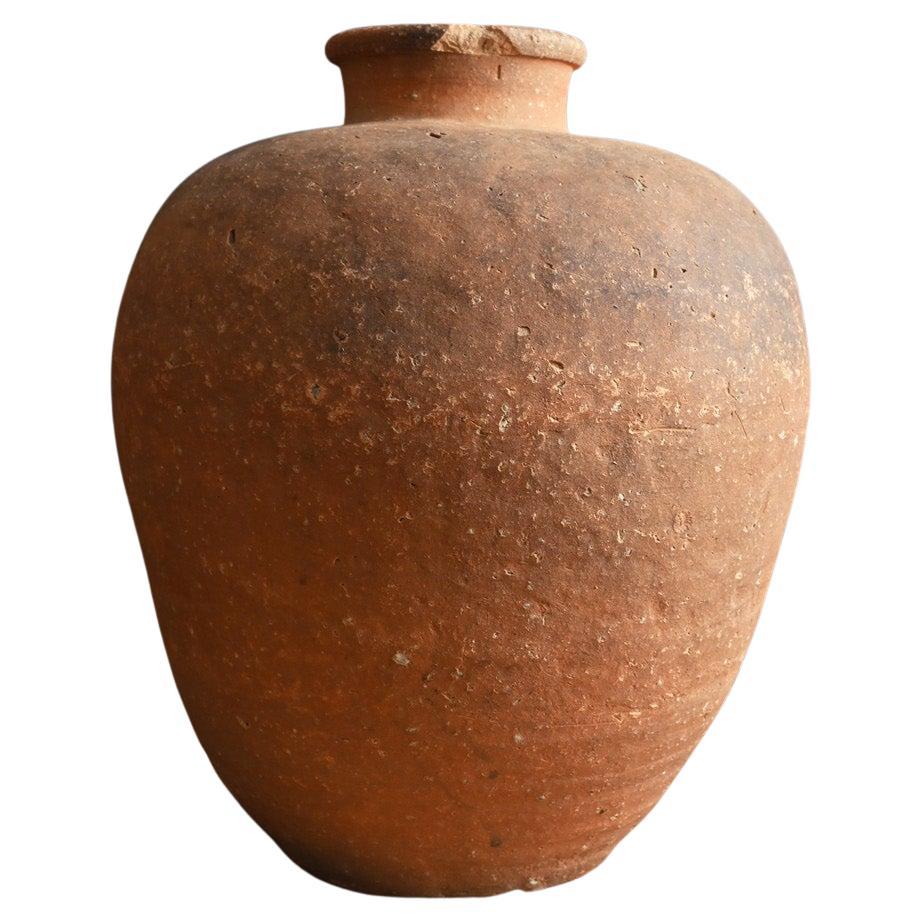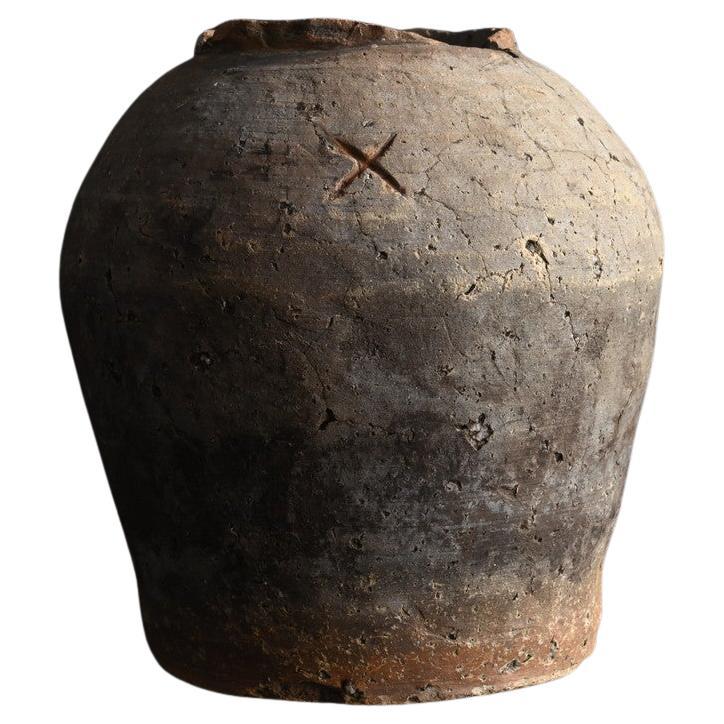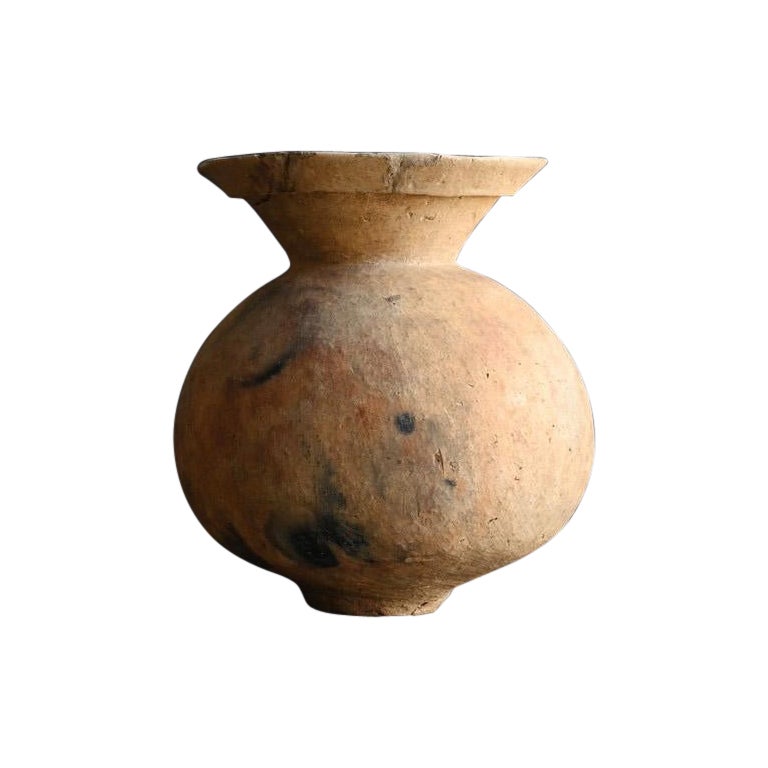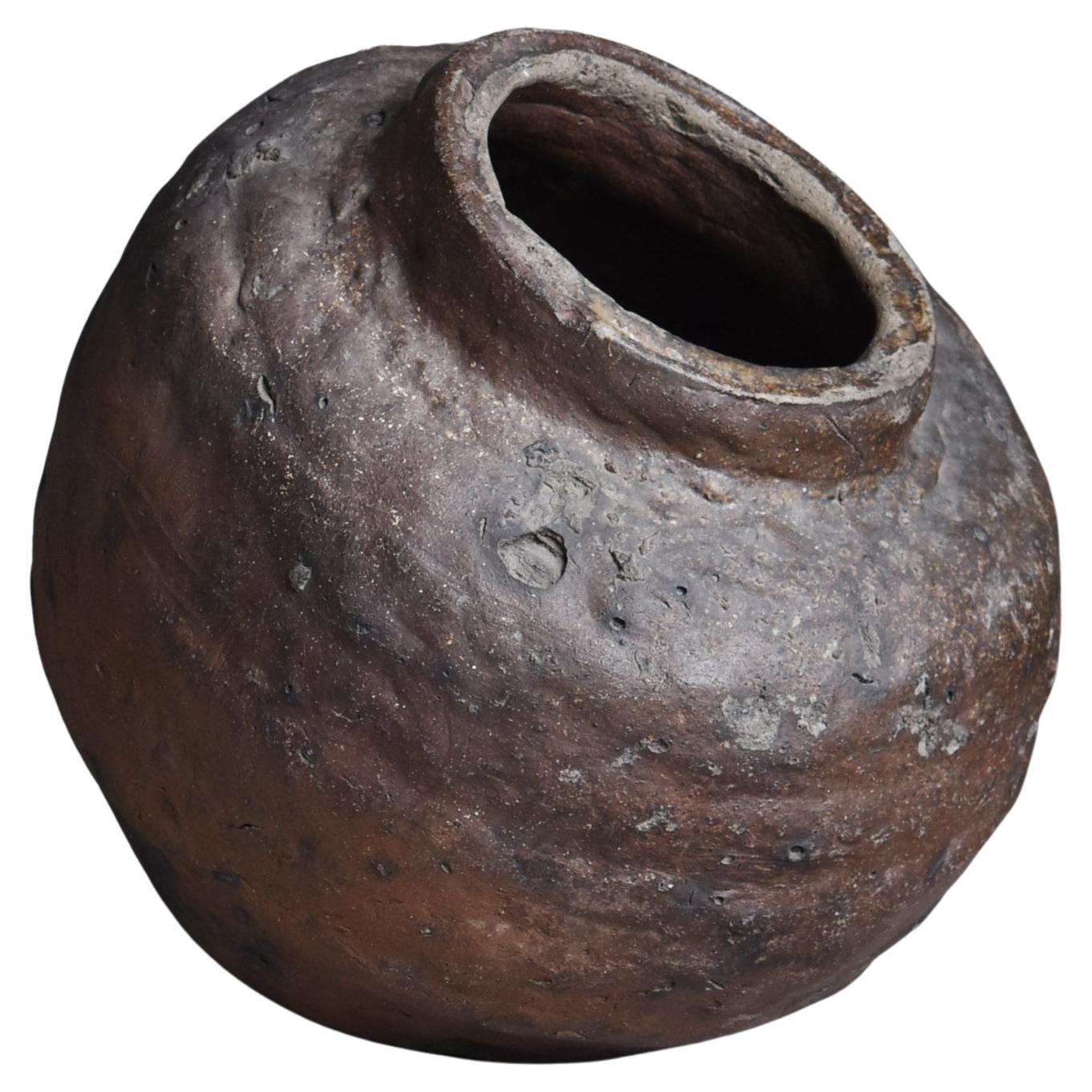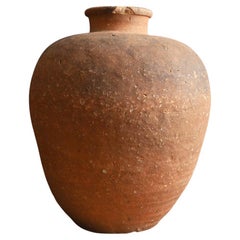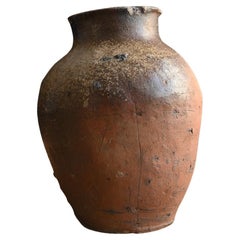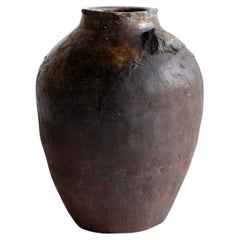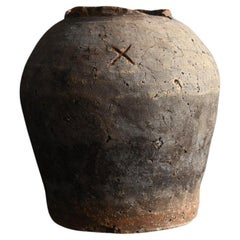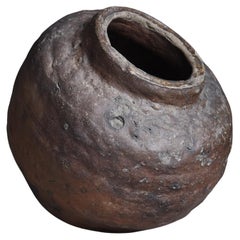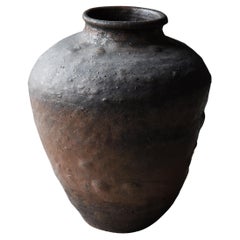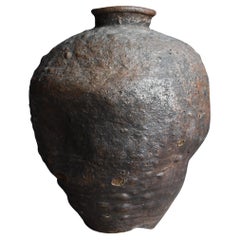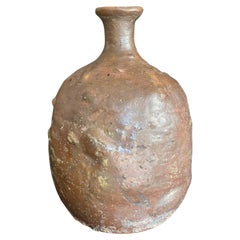Items Similar to Japanese antique Shigaraki ware vase/1400-1573/Wabi-sabi vase
Want more images or videos?
Request additional images or videos from the seller
1 of 21
Japanese antique Shigaraki ware vase/1400-1573/Wabi-sabi vase
$2,000
£1,514.99
€1,747.88
CA$2,804.24
A$3,125.98
CHF 1,645.31
MX$37,895.59
NOK 20,947.92
SEK 19,476.49
DKK 13,045.80
About the Item
It is "Shigaraki ware".
Shigaraki ware is a historic kiln located in Shiga Prefecture.
(The Shigaraki ware kiln is circled in red in the image.)
It is said to have originated in the 8th century.
There are six kilns with long histories in Japan,
and this is one of them.
This jar was fired in the Muromachi period (1400s), which is even older than the Edo period.
Shigaraki ware is characterized by its abundance of feldspar (glassy pebbles).
Small grains can be seen on the surface of the jar, which are feldspar.
The pebbles that look like they have broken through the jar's skin are also feldspar.
The characteristics of this jar are well displayed.
And the greatest attraction of this jar is the beautiful finish it has after firing.
The appearance of the jar changes greatly depending on the temperature and heat of the kiln.
It is impressive as it produces a gradation of various colors.
It does not have the same appearance from any angle, 360 degrees.
I think it is a masterpiece among Shigaraki ware jars.
Another interesting point is that this jar usually has a trumpet-like tip, but it was intentionally broken like this.
Old Shigaraki ware jars are often found in this state, and it is thought that the tip was broken to make it easier to use as a tool.
I think this shape is also beautiful.
Also, as a reference, a similar item from the same era as this item was featured in the Japanese art book "Shigaraki Ware Masterpieces Illustrated Guide," so I have attached a photo of it.
Also, the side of this jar that was exposed to the strong heat has a lot of ash on it, and there are traces of natural glaze flow.
The most interesting part is the cracked part.
It is thought to have broken while it was being fired in the kiln.
This is a product of chance.
In Japanese, a jar that looks like torn paper like this is called a "Yabure Tsubo." "Yabure" = torn, "Tsubo" = jar
A jar in this state is very rare.
It is difficult to get one even in Japan.
Also, the part circled in red is probably cracked when it was knocked over.
However, it is glued together so you can use it without any problems.
There is also a thin crack at the bottom, so if you put water in it, it may leak out.
If you want to decorate it with flowers, fill another container with water and put it in this vase.
This item was owned by a Japanese collector.
Why not show it off to your friends?
This vase is recommended!
Weight: 6.3kg
[We have a unique Japanese aesthetic sense.
And only we can introduce unique items through our purchasing channels in Japan and the experience we have gained so far, in such a way that no one else can imitate.]
- Dimensions:Height: 13.86 in (35.2 cm)Diameter: 12.45 in (31.6 cm)
- Style:Other (Of the Period)
- Materials and Techniques:
- Place of Origin:
- Period:
- Date of Manufacture:1400-1573
- Condition:Repaired: the part circled in red is probably cracked when it was knocked over. However, it is glued together so you can use it without any problems. There is also a thin crack at the bottom, so if you put water in it, it may leak out.
- Seller Location:Sammu-shi, JP
- Reference Number:1stDibs: LU5487242445002
About the Seller
5.0
Platinum Seller
Premium sellers with a 4.7+ rating and 24-hour response times
Established in 2015
1stDibs seller since 2020
1,609 sales on 1stDibs
Typical response time: 6 hours
- ShippingRetrieving quote...Shipping from: senzoku, Japan
- Return Policy
Authenticity Guarantee
In the unlikely event there’s an issue with an item’s authenticity, contact us within 1 year for a full refund. DetailsMoney-Back Guarantee
If your item is not as described, is damaged in transit, or does not arrive, contact us within 7 days for a full refund. Details24-Hour Cancellation
You have a 24-hour grace period in which to reconsider your purchase, with no questions asked.Vetted Professional Sellers
Our world-class sellers must adhere to strict standards for service and quality, maintaining the integrity of our listings.Price-Match Guarantee
If you find that a seller listed the same item for a lower price elsewhere, we’ll match it.Trusted Global Delivery
Our best-in-class carrier network provides specialized shipping options worldwide, including custom delivery.More From This Seller
View AllJapanese antique Shigaraki ware vase/withered wabi-sabi vase/16th century
Located in Sammu-shi, Chiba
This is Shigaraki ware pottery made in Shiga Prefecture, Japan. Shigaraki ware is said to have been born in the Shigaraki region of Shiga Prefecture around the 8th century and is one...
Category
Antique 15th Century and Earlier Japanese Other Jars
Materials
Pottery
Japanese Antique Pottery Jar 15th-16th Century/ Wabi-Sabi Jar/Tokoname Vase
Located in Sammu-shi, Chiba
It is a very old jar in Japan.
This is a pottery called Tokoname ware.
Tokoname is a kiln located in Aichi prefecture, Japan.
It is said to have originated around the 12th century.
A...
Category
Antique 16th Century Japanese Other Vases
Materials
Pottery
Japanese Antique Pottery Jar 16th-17th Century/ Wabi-Sabi Vase/Tokoname
Located in Sammu-shi, Chiba
Tokoname is a region located in Aichi Prefecture.
It is a pottery production center with a very old history in Japan (around the 12th century).
These jars were probably fired during...
Category
Antique Early 17th Century Japanese Edo Vases
Materials
Pottery
Small antique Japanese pottery vase/14th to 15th century/"Shigaraki ware"
Located in Sammu-shi, Chiba
It is "Shigaraki ware".
Shigaraki is a historical kiln located in Shiga Prefecture, Japan. (Shigaraki Kiln is marked with a red circle on the map.)
It is said to have originated in t...
Category
Antique 15th Century and Earlier Japanese Other Jars
Materials
Pottery
Very old Japanese excavated earthenware/Wabi Sabi vase
Located in Sammu-shi, Chiba
This is earthenware excavated in Japan.
It has a very beautiful shape and is well balanced.
The color of the pottery is light brown because it is fired at a low temperature.
Dependin...
Category
Antique 15th Century and Earlier Japanese Other Vases
Materials
Pottery
Japanese Antique Pottery Jar 16th-17th Century/ Wabi-Sabi Vase/Tokoname
Located in Sammu-shi, Chiba
Tokoname is a region located in Aichi Prefecture.
It is a pottery production center with a very old history in Japan (around the 12th century).
These jars were probably fired during...
Category
Antique Early 17th Century Japanese Edo Vases
Materials
Pottery
You May Also Like
Japanese Antique "Lying Bizen ware" 18th Century / Pottery Vase Wabi Sabi
Located in Chōsei District Nagara, JP
This is a Japanese Bizen ware. It is called Ko-Bizen.
It is estimated to have been made in the Edo period (18th century), and has a very powerful presence.
Ko-Bizen refers to Bizen ...
Category
Antique 18th Century Japanese Edo Vases
Materials
Pottery
Japanese Antique Shigaraki Ware 17th Century / Pottery Vase Vessel Wabi Sabi
Located in Chōsei District Nagara, JP
This is a ceramic jar made in Japan.
It was made in the 17th Century and is a valuable piece that conveys the lifestyle and aesthetic sense of the time.
Shigaraki ware is one of the...
Category
Antique 17th Century Japanese Edo Vases
Materials
Pottery
Japanese Antique Shigaraki ware 17th Century / Pottery Vase Wabisabi
Located in Chōsei District Nagara, JP
This is an old pottery pot made in Japan.
It is a very old pot believed to have been made in the 17th century, early Edo period, and is called Koshigaraki in Japan.
Koshigaraki refe...
Category
Antique 17th Century Japanese Edo Vases
Materials
Pottery
Japanese Antique Edo Meiji Wabi-Sabi Tanba Tamba Art Pottery Vase Jar Pot
Located in Studio City, CA
A beautifully shaped, glazed (a lava crater glaze reminiscent of such modern western potters as Beatrice Wood, Glenn Lukens and Otto and Gertrud Natzler), and complexly textured Tamb...
Category
Antique Late 19th Century Japanese Meiji Ceramics
Materials
Earthenware, Pottery
Japanese Antique Shigaraki Ware 18th Century / Pottery Vase Wabi Sabi
Located in Chōsei District Nagara, JP
This is an old, large Shigaraki ware pot made in Japan.
It is estimated to have been produced in the late Edo period, around the 18th century. Among traditional Japanese ceramics, Sh...
Category
Antique Late 18th Century Japanese Edo Vases
Materials
Pottery
Japanese Wabi-Sabi Small Vase, Meiji Period, 1750-1850
Located in Katori-Shi, 12
This is an old Japanese pottery.
It is from the Meiji period (1860s-1900s).
It was used as a fire extinguishing pot.
This piece has beautiful color and texture.
It is very rare...
Category
Early 20th Century Meiji Antiquities
Materials
Pottery
